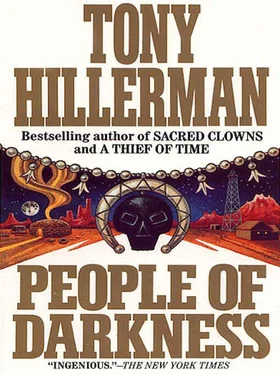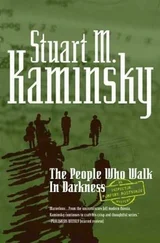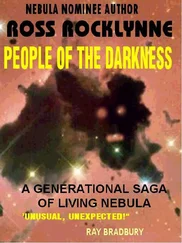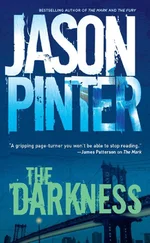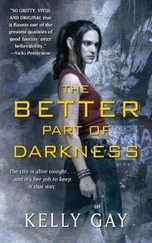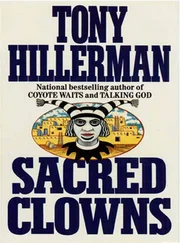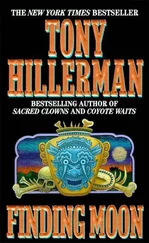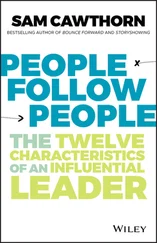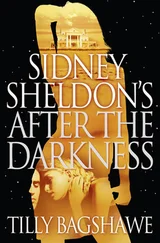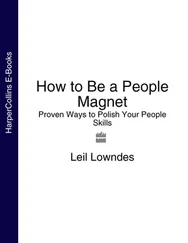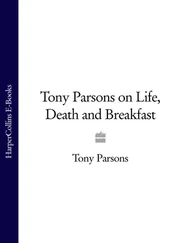“They don’t much believe in Navajo Wolves at the hospital,” Chee said. “What did they think he died of?”
“They said it was cancer,” Fannie said. “Leukemia got in his blood.”
“Does Joseph Sam still live around here?”
“He died too,” Fannie Kinlicheenie said. “I heard it was the same thing. Leukemia.”
“I’d say that the Enemy Way didn’t work too well,” Chee said.
“I think they waited too long. But part of it worked. It turned the evil around and pointed it at the Navajo Wolf.” Fannie Kinlicheenie’s smile was full of malice. “He died, too.”
“Do you know who it was?” Chee knew he’d have to wait for an answer and that he might not get one. The Dinee didn’t like to talk of the dead, or of witches. Speaking the name of a dead witch was doubly dangerous.
Fannie Kinlicheenie licked her lips.
“It was the peyote chief,” she said.
And thus she avoided pronouncing the name of Dillon Charley.
THEY JOLTED DOWN THE DIRT TRACK toward the graded road that would take them to the asphalt pavement and back to Crownpoint. The sun was down now. High overhead a strip of feathery cirrus clouds glowed salmon pink in the afterglow. But all around them the landscape was dark. Mary had been saying almost nothing.
“Are you going to tell me what all that was about?” She asked it without looking at him.
Chee glanced at her profile. “The part where she started talking Navajo?”
“And you started talking Navajo. Yes. That part.”
“She said some people in the Native American Church were witches, and they gave Woody Begay and Roscoe Sam corpse poisoning, and they both died. And before they died, they held an Enemy Way for them, and that turned the witching around against the witch. And the witch was Dillon Charley, and that’s what killed Dillon.”
Mary was looking at him now. “What do you think of all that?”
“And she said the witches made the oil well blow up,” Chee added. “And that Joseph Sam is dead, too.”
“Did she say why they wanted to do that?”
“No,” Chee said.
“Did she know? Did you ask her?”
“No,” Chee said. “You have to understand about our witches. They wouldn’t need a motive in the normal sense. Do you know about Navajo Wolves?”
“I thought I did,” Mary said. “Aren’t they like the white man’s witches, and witches in general, and our Laguna-Acoma witches?” She laughed. “Hyphenated witches,” she said. “Only with the U.S. Bureau of Indian Affairs would you get hyphenated witches.”
“The way it works with Navajos, witchcraft is the reversal of the Navajo Way. The way the Holy People taught us, the goal of life was yo’zho’ . No word for it in English. Sort of a combination of beauty/harmony, being in tune, going with the flow, feeling peaceful, all wrapped up in a single concept. Witchcraft is the reverse of this concept, basically. There’s a mythology built up around it, of course. You get to be a witch by violating the basic taboos – killing a relative, incest, so forth. And you get certain powers. You can turn yourself into a dog or a wolf. You can fly. And you have power to make people sick. That’s the opposite of the good power the Holy People gave us – to cure people by getting them back into yo’zho’ . Back into beauty. So, to make a long story short, a witch wouldn’t have a motive for blowing up an oil well. It’s a bad thing to do, blowing people up. That’s all the motive a skinwalker needs.”
“And she said Dillon Charley was a witch?”
“That’s what she said. The families had an Enemy Way and turned the witching spell around, and Dillon Charley died.”
“That proves he was the witch?”
“Well, sort of,” Chee said. “They’d have to already have him spotted as the witch. Then someone has to get something that belonged to a witch – hair, pair of socks, a hat, something personal. That represents the scalp in the Enemy Way ceremonial. On the last day of the ceremonial, the scalp is shot with an arrow. If everything has been properly done, and they have the right witch, this causes the witch to get sick and die from his own spell.”
“And the patient gets well?”
“That’s the way it works. But it didn’t work for our friend Woody. And it didn’t work for Roscoe Sam.”
The patrol car jolted into a shallow wash and out again. The cloud overhead had changed from pink to a deep glowing red. “Two more dead,” Mary Landon said. “Or three.”
“You predicted Woody,” Chee said.
“There were six of them to begin with,” she said. “Six People of Darkness. Six men who didn’t go to work at the oil well. Now Roscoe Sam is dead, and Joseph Sam and Begay, and Dillon Charley.”
“Leaves Windy Tsossie and Rudolph Becenti,” Chee said. “And so far nobody knows where to find them.”
“That’s too many dead,” Mary Landon said. “They wouldn’t be all that old. Probably late middle age if they were alive now. But they died a long, long time ago. When they were pretty young. Just a few years after the oil well. That’s too many to be dead.” She looked at him thoughtfully. “You think somebody poisoned them all? Something like that? Maybe revenge?”
“As far as we know, Begay died of leukemia,” Chee said. “Same thing with Roscoe Sam. Dillon Charley died in the hospital. Vines says he told him he had some sort of cancer. Anyway, in a hospital they’d have detected poison if it was that.”
“With an autopsy?” Mary asked.
Chee drove a little while. “I think you’re thinking the same thing I’m thinking,” he said. “You’re thinking about Emerson Charley.”
“Yes,” Mary said. “I’m thinking about how Emerson Charley didn’t have an autopsy.”
“Because somebody stole his body out of the cold room at BCMC,” Chee said.
“Which seems a funny thing to steal.”
“Right,” Chee said.
“Unless you don’t want an autopsy performed.”
“Right,” Chee said.
“Which is also what you’d get if you blow the guy into little pieces by bombing his truck. No autopsy. Right?”
“Yeah,” Chee said.
“Yeah,” Mary said. “Yeah, or maybe baloney. Why would anyone want to poison Emerson Charley? Or Dillon Charley? Or Woody Begay, or any of those guys?”
“No reason,” Chee said. “But you know what? Let’s go to Albuquerque and see what we can find out at the hospital.”
“I don’t know,” Mary Landon said. “When I go places with you, it’s no picnic.” She hesitated. “Do you think he’ll be there?” She didn’t have to say the blond man. Chee knew what she meant.
“I’ve thought about that,” Chee said. “If I was him, I wouldn’t go near that hospital. And if I was looking for you and me, that would be the last place I’d look.”
THE DOCTOR’S NAME was Edith Vassa. The midmorning sun slanted through the window behind her desk and flashed through her short reddish hair. She was a young woman with that pink complexion which made Jimmy Chee wonder why the white men called Indians redskins. Dr. Vassa was the physician who had treated Emerson Charley at the University of New Mexico Cancer Research and Treatment Center. Thus she had been stuck with the job of trying to find out what had happened to the Charley corpse. It had been a frustrating, embarrassing dead end. Edith Vassa was sick of it. Her expression showed it.
“I can tell you everything I know in a very few words. Emerson Charley’s vital signs ceased at approximately 5:13 P.M. The physician on duty made the usual examination and certified death. The body was tagged for autopsy and moved to the morgue cold room. The next morning, the morgue attendant noticed he had only one body instead of two. He guessed the body had gone to the morphology laboratory without being properly checked out.” Dr. Vassa made an impatient gesture with her hands. “To skip the unnecessary details, it was finally learned that the body had disappeared.”
Читать дальше
